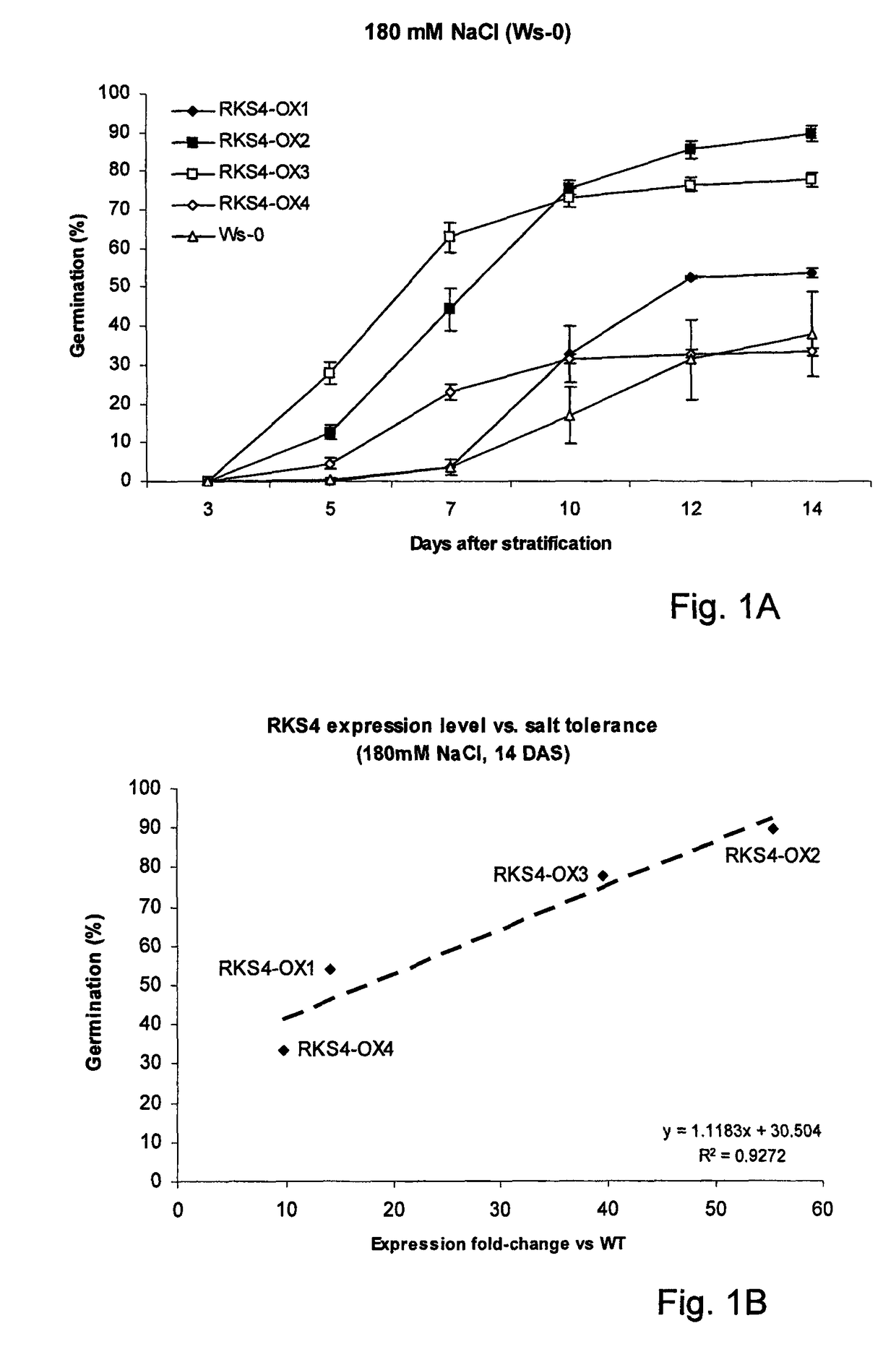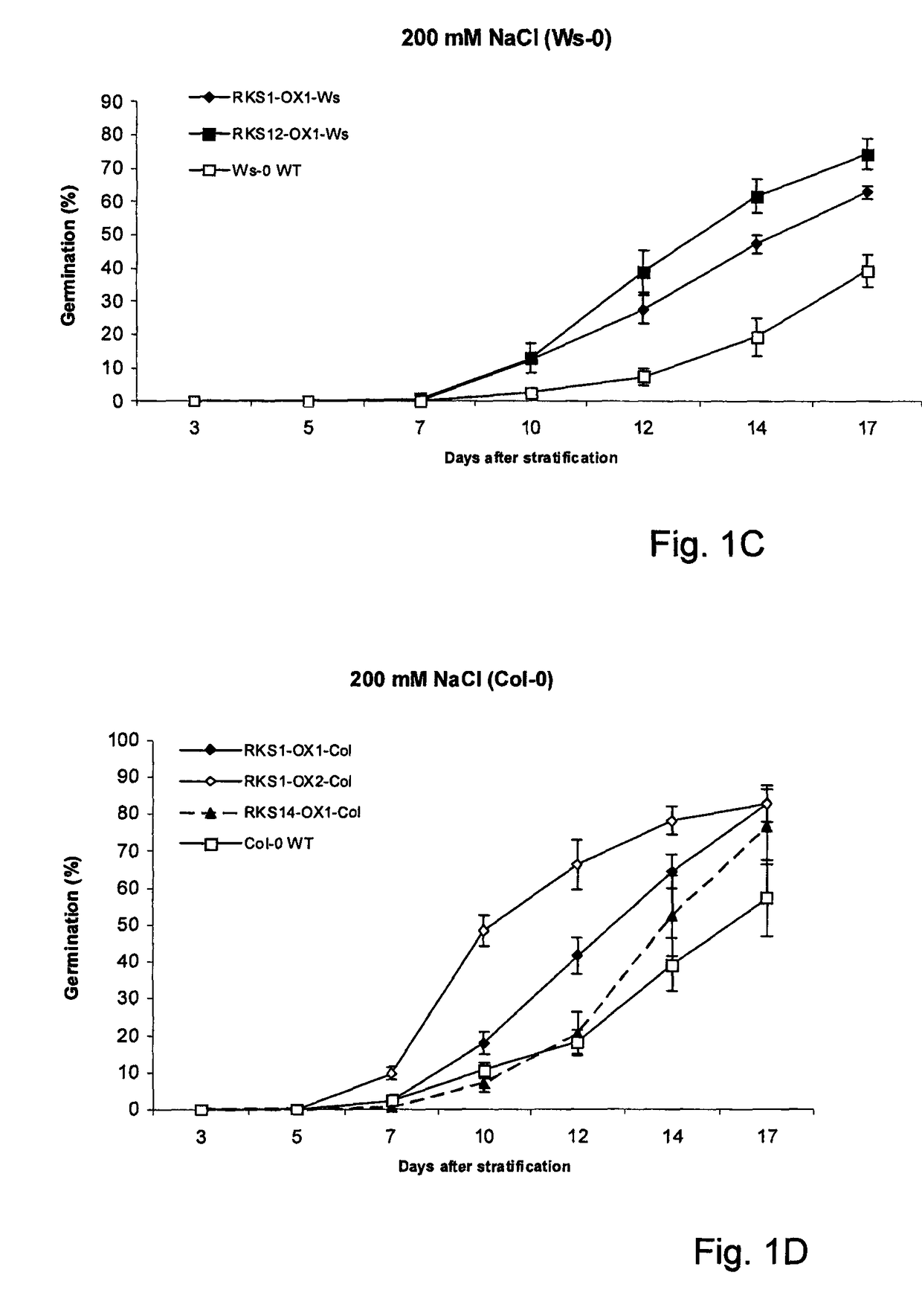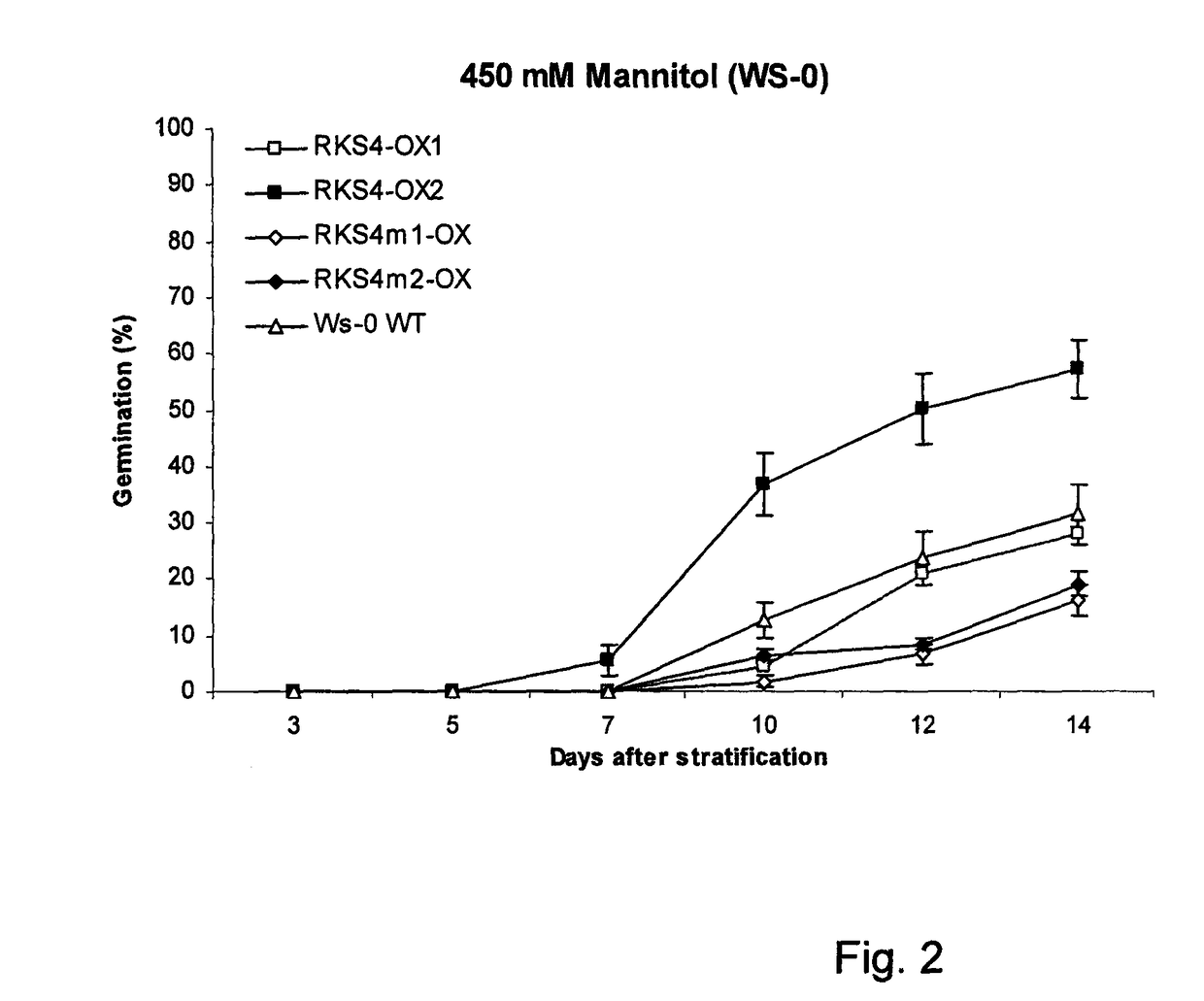Resistance to abiotic stress in plants
a technology of abiotic stress and resistance to abiotic stress, applied in the field of plant genetics, can solve the problems of low yield or nutritional value, low ornamental characteristics, and often affected by environmental adaptation, and achieve the effect of reducing the number of abiotic stress-related diseases
- Summary
- Abstract
- Description
- Claims
- Application Information
AI Technical Summary
Benefits of technology
Problems solved by technology
Method used
Image
Examples
example 1
Effect of Abiotic Stresses on Seed Germination (High Salinity and Osmotic Stresses)
[0115]For all experiments Arabidopsis seeds (wild-type and homozygous transgenic lines) of ecotype Wassilewskija (Ws-0) or Columbia (Col-0) were surface-sterilised in 2% bleach+0.01% Tween 20, rinsed 5× in sterile water and plated on MS+vitamins (0.8% agar w / v), supplemented or not with 180 or 200 mM NaCl or 400 and 450 mM mannitol. Stratification was performed at 4° C. in the dark for 24 h before transferring the plates to a growth chamber at 20° C. with a 16 h photoperiod (100 umol·m−2·s−1).
[0116]The percentage of germination was determined every 2 days from 3 days after stratification until 14-17 days for each treatment
Results:
[0117]The effect of high salt on seed germination was followed in time in order to bring forward possible subtle effects of the transgenes and was monitored using different NaCl concentrations. NaCl concentrations were indeed adjusted to the response of the wild-type control ...
example 2
Effect of Low Temperature on Plant Growth
[0119]For all experiments Arabidopsis seeds (wild-type and homozygous transgenic lines) of ecotype Wassilewskija (Ws-0) or Columbia (Col-0) were surface-sterilised in 2% bleach+0.01% Tween 20, rinsed 5× in sterile water and plated on MS+vitamins (0.8% agar w / v), supplemented or not with 10 g / l sucrose (=MS10). Stratification was performed at 4° C. in the dark for 24 h before transferring the plates to a growth chamber at 21° C. with a 16 h photoperiod (100 umol·m−2·s−1). After 10 days, 20 seedlings per sample were transferred to fresh plates containing the same medium. Seedlings were grown further for 10 more days under the same temperature and light conditions, after which all plates were wrapped in aluminium foil and placed for 1 hour at either −25° C. or at room temperature (control plates). Seedlings were subsequently transferred to soil following a randomisation scheme to correct for position effects and the rosette diameter of each plan...
PUM
| Property | Measurement | Unit |
|---|---|---|
| temperature | aaaaa | aaaaa |
| abiotic stress tolerance | aaaaa | aaaaa |
| abiotic stress | aaaaa | aaaaa |
Abstract
Description
Claims
Application Information
 Login to View More
Login to View More - R&D
- Intellectual Property
- Life Sciences
- Materials
- Tech Scout
- Unparalleled Data Quality
- Higher Quality Content
- 60% Fewer Hallucinations
Browse by: Latest US Patents, China's latest patents, Technical Efficacy Thesaurus, Application Domain, Technology Topic, Popular Technical Reports.
© 2025 PatSnap. All rights reserved.Legal|Privacy policy|Modern Slavery Act Transparency Statement|Sitemap|About US| Contact US: help@patsnap.com



